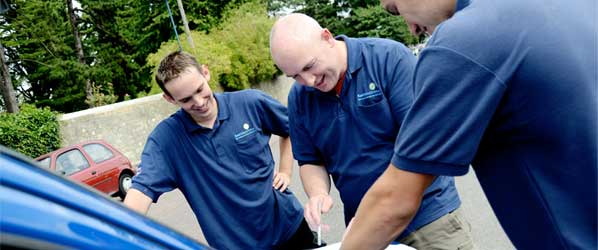Is this electrical danger in your home?
Counterfeit electrical products are yet again in the headlines, this time in the form of counterfeit chargers – which can include phone, tablet, Ipod and other MP3 chargers.
Counterfeit chargers of all types are causing a huge problem at the moment across the UK as cash strapped householders are opting for cut price or even knowingly purchasing counterfeit phone chargers in a bid to safe money when a charger needs replacement.
The true cost of a counterfeit charger
There is really no price to put on life – and a counterfeit charger can reveal it’s true colours in the most horrific way imaginable – and that is loss of life. One person dies every week a a result of electric shock. Thousands more are injured by electricity and electrical fires are currently the biggest reason for house fires in the UK.
Counterfeit chargers contribute heavily to electrical fires and cause major problem to electrical sockets including overheating and arcing which cause cracking and heat damage. Of course these sockets will need to be replaced by a qualified and registered electrician who will also need to inspect the wiring behind the socket for damage.
Of course such electrical work will cost more than the purchase of a cheap phone charger – so I always recommend that although it can be costly, to only purchase approved phone chargers that are compatible with your phone.
I have seen an increase in damage caused by counterfeit products which include other electrical appliances and even e-cigarette chargers causing expensive electrical damage. No one wants to spend money un-necessarily, so it is worth checking your chargers for safety.
How to spot a counterfeit charger
Counterfeit chargers can appear on the outside as very convincing and the outer casing may not appear any different to the genuine charger. However take a closer look for these tell tale signs of a counterfeit charger:
- Pins that are close to the edge of the charger
If there is less than a 9.5mm gap between the edge of the pins and the edge of the charger, there is a serious risk of electrical shock or injury when plugging or unplugging the charger.
- Does it plug in easily?
You can try plugging in the charger into a socket – but do not turn it on or plug your phone into it. A genuine plug will slide into the socket smoothly, however if you are having difficulty lining up the pins or having to use unreasonable force to plug the charger in, then it is likely to be counterfeit. Pins that are the wrong length or the incorrect distance apart can cause overheating and fire inside the socket.
- Markings
This is one of the safest methods you can use to check if your charger may be counterfeit. Firstly check for a CE mark and that the output voltage and current ratings marked on the charger and your device are the same.
Do not rely on a CE mark alone as these can be forged easily.
- Instructions
The charger should come with clear instructions on how to use it safely. If the instructions are vague or worse still not included then it is not worth taking the risk.
Genuine vs Counterfeit
Genuine chargers give you peace of mind against electrical safety and also protect your device from harm. They are sold via reputable outlets.
Counterfeit products on the other hand do not satisfy UK regulations and do not offer any protections against electrical shock or injury, fire or damage to devices. They are found via unapproved outlets and other unscrupulous traders.
All retail outlets have a responsibility to sell only safe electrical items, so if you are aware of any retailers selling counterfeit electrical items, contact your trading standards office asap.
- Log in to post comments




